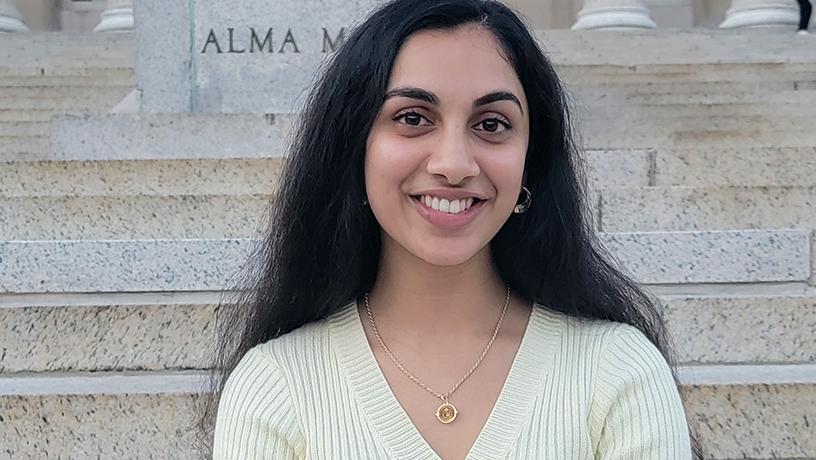2021 SURE Fellows
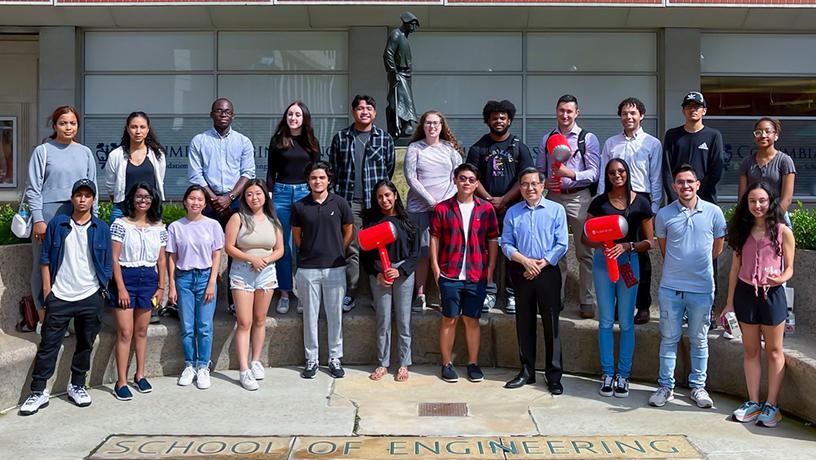
The Columbia University and Amazon SURE Program
The Columbia University and Amazon Summer Undergraduate Research Experience (SURE) Program was initiated in 2021 with an aim to increase diversity in the science and engineering fields by providing a unique summer research experience for a cohort of students from historically underrepresented and minority backgrounds. During the program, students worked with a Columbia Engineering faculty mentor on a research project as well as attended programming, lectures, and workshops hosted by Columbia University or Amazon with a focus on career, professional, and research skills development. In its inaugural year, with generous funding from Amazon, the SURE program was able to bring a cohort of 26 students from across the country to campus from June 28th through August 20th to gain invaluable learning and insight into academic and industry engineering science and research.
Robert Adkins | Maryam Aziz | Carliza Canela | Sushma Chappidi | Andre Deosaran | Marcos Fermin | Ellie Haber | Tasfia Haque | Jada Hinds | Sabbir Hossain | Rasha Hussain | Zafrul Islam | Malka Jacobs | Sin Lin | Robert Magpie | Chelsea Mikal | Eries Jay Moreno | Onyinyechi Obineche | Imani Phillips | Alondra Stafford | Stacy Villanueva | Cameron Ashe | Sarah Flanigan | James Platt | Diego Rosario
Robert Adkins | Internet Real-Time Lab
FACULTY MENTOR: HENNING SCHULZRINNE, DEPARTMENT OF COMPUTER SCIENCE
Robert Adkins is a rising fourth year student at Hampton University’s Department of Electrical and Computer Engineering, from Silver Spring, Maryland. On campus, he is a member of the Partnership For Research in Education and Materials(PREM). This program consists of research with different fields and outreach to younger children in the Hampton area to increase the involvement in engineering to better saturate the field of engineering for the future.
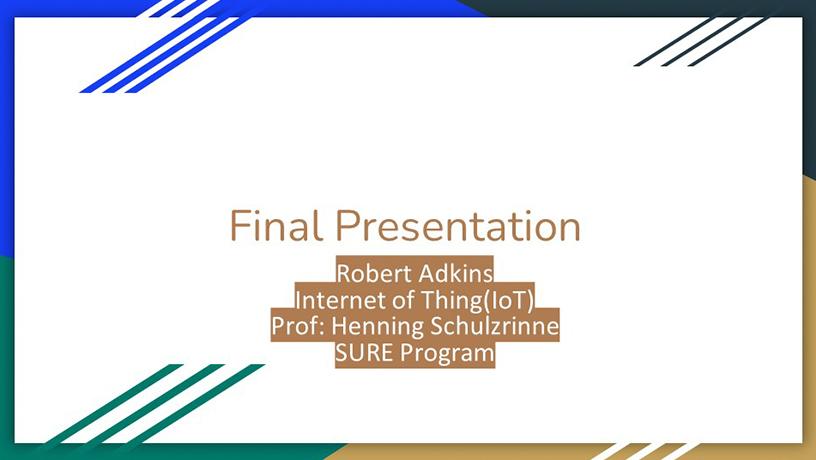
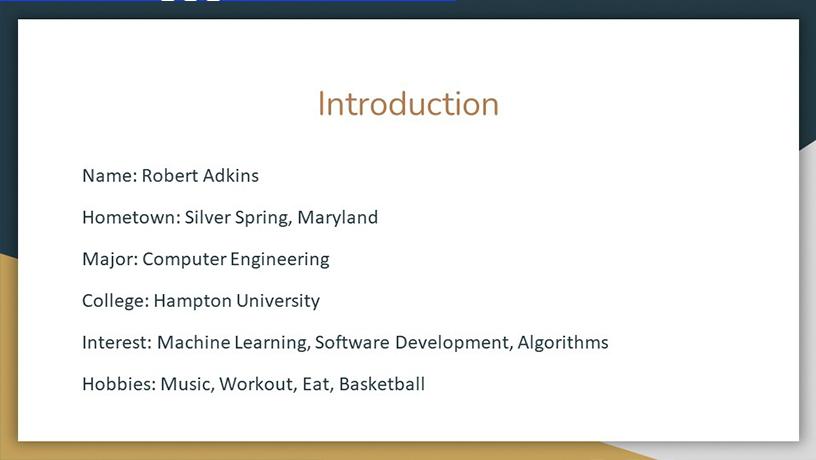
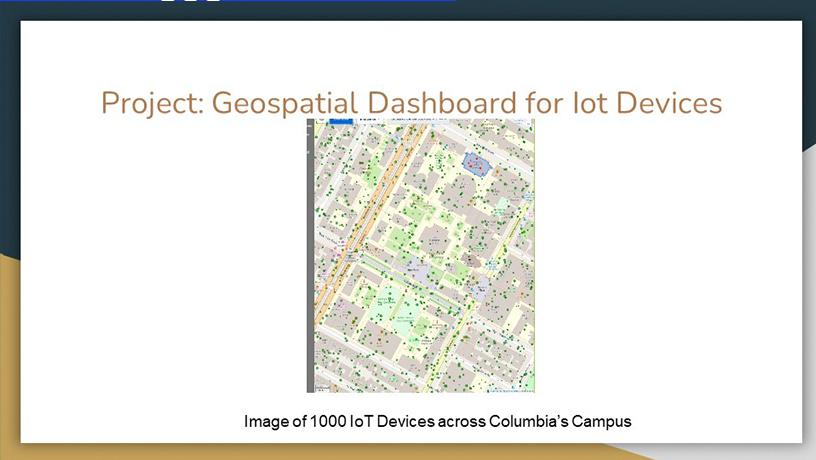
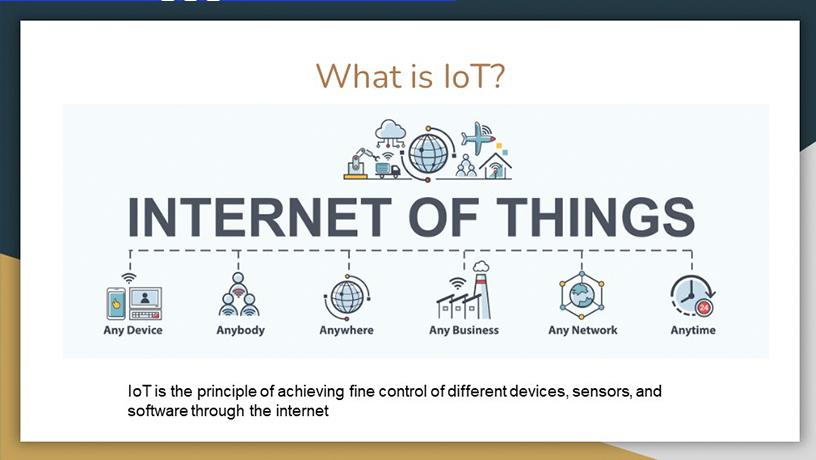
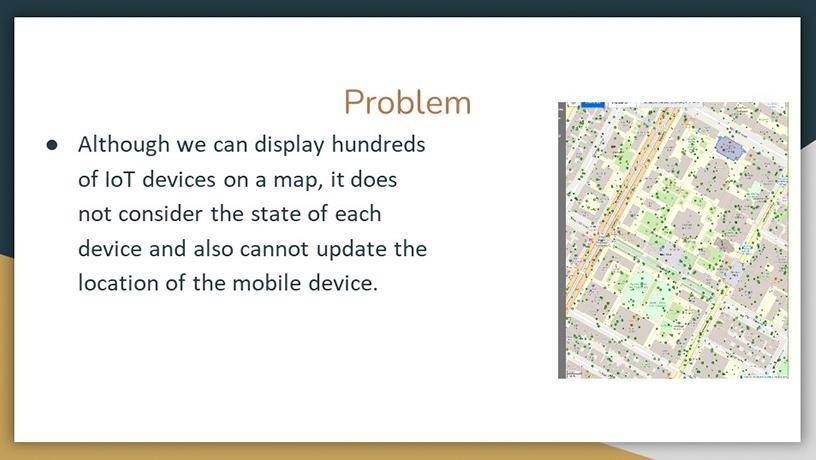
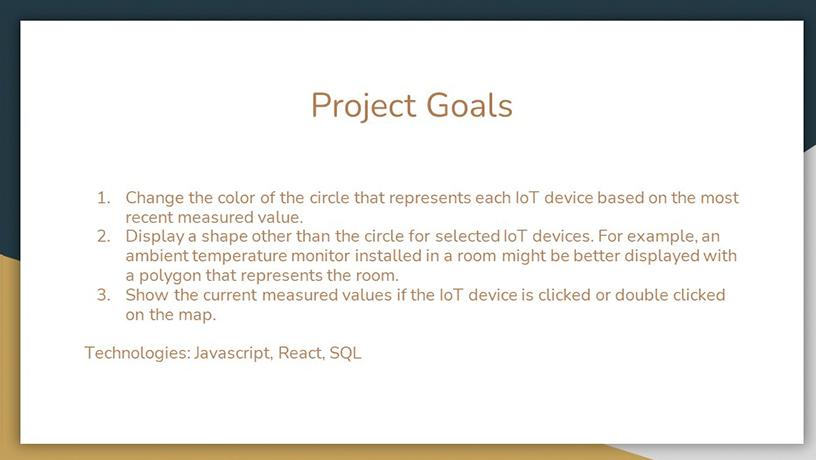
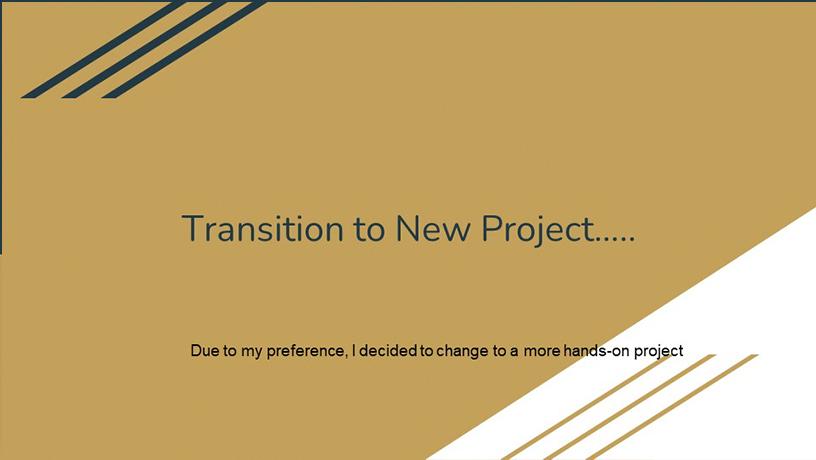
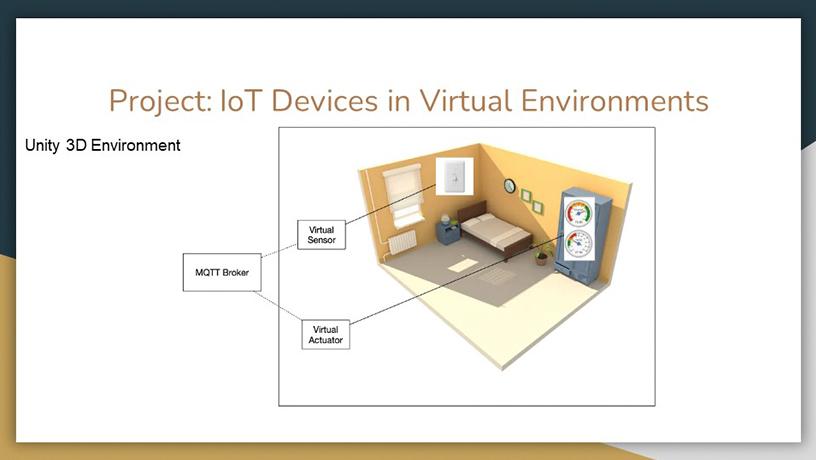
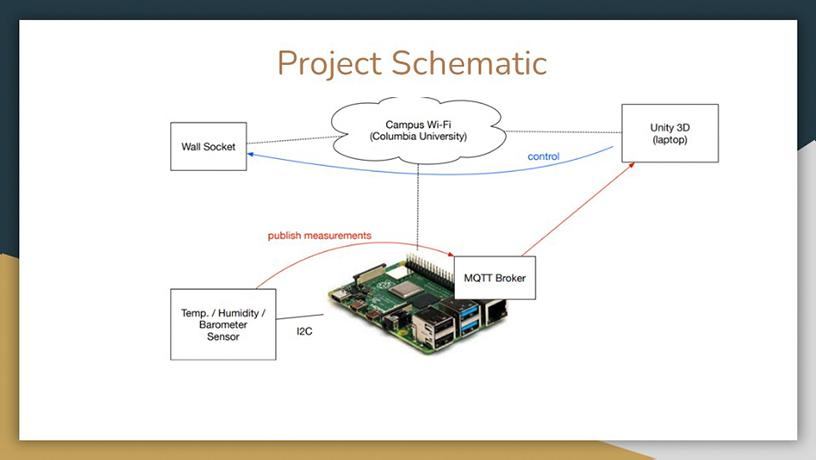
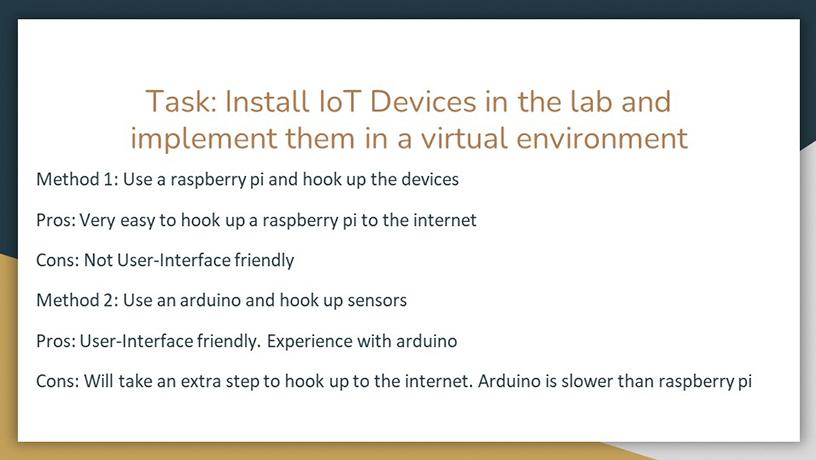
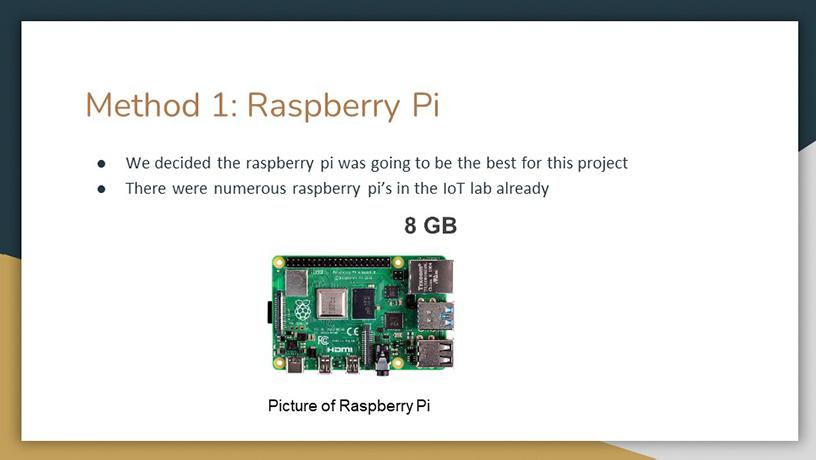
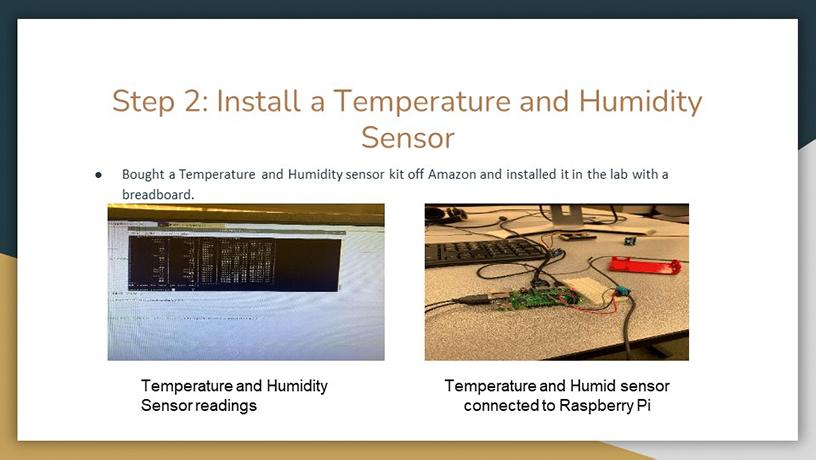

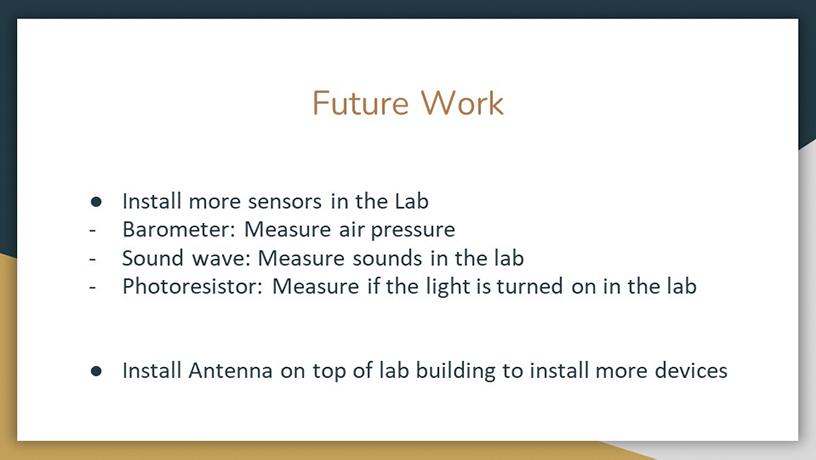
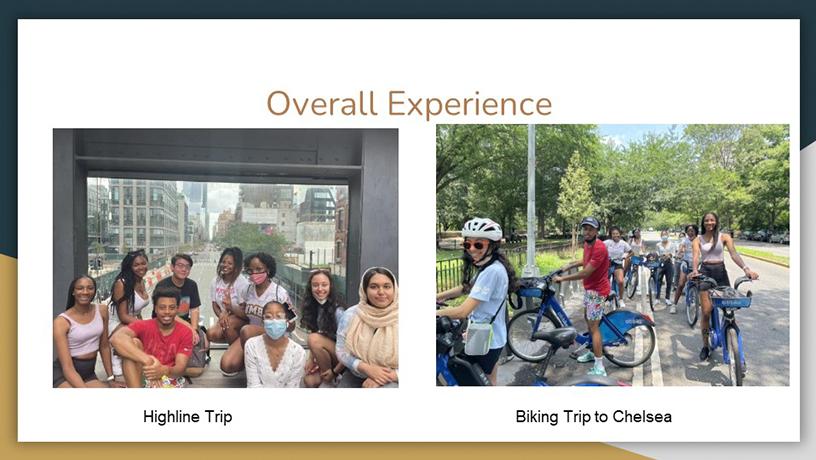
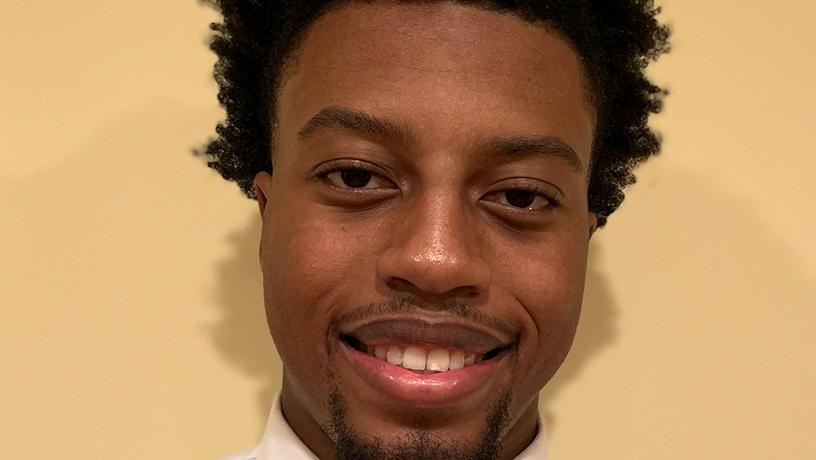
Robert Adkins
Maryam Aziz | Computer Enabled Abilities Lab
FACULTY MENTOR: BRIAN SMITH, DEPARTMENT OF COMPUTER SCIENCE
Maryam Aziz is a computer science and engineering student at the University of Connecticut. Her education is focused on computational data analytics and mathematics.
She is especially interested in machine learning because of its prospective social impacts. Before joining the SURE program, she knew she wanted to be involved in developing technology for social good. This passion of hers led her to the Computer Enabled Abilities Lab (which focuses on accessibility research). Her experience this summer has been amazing and has reaffirmed her desire to pursue developing assistive technology in the future. She hopes to continue building on the research skills she gained this summer and develop a career utilizing machine learning to better the lives of others.
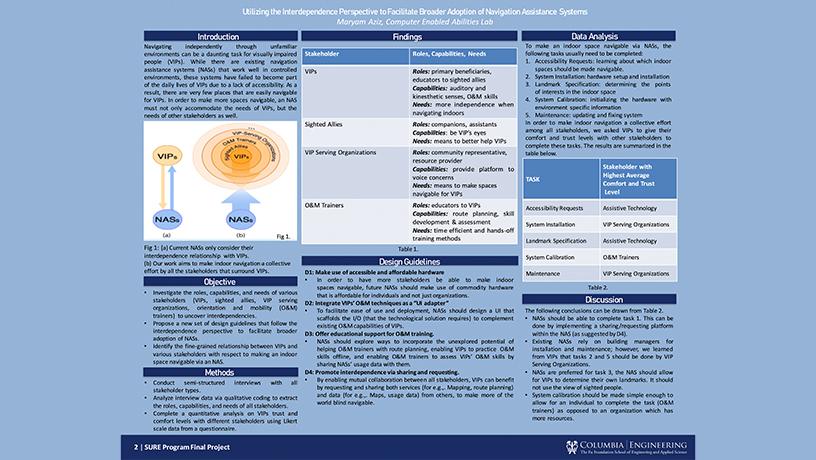
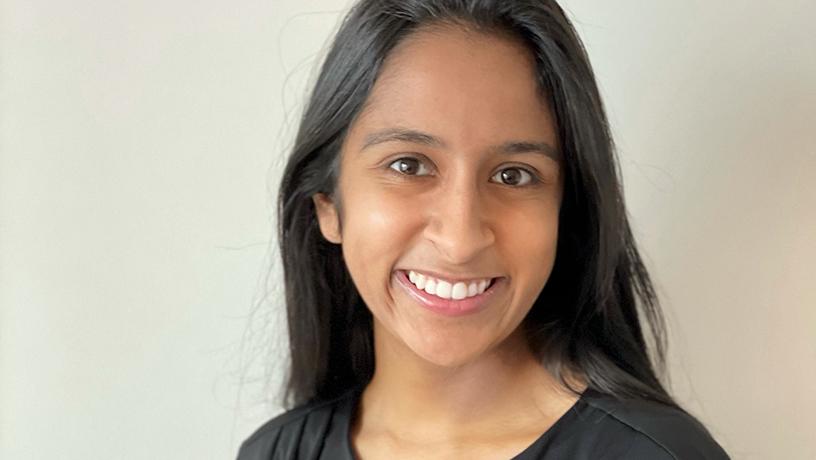
Maryam Aziz
Carliza Canela | Venkataraman Lab
FACULTY MENTOR: LATHA VENKATARAMAN, DEPARTMENT OF APPLIED PHYSICS AND APPLIED MATHEMATICS
Scanning tunneling microscopy break-junction (STM-BJ) is an emerging technique that can probe organic reactions at the single-molecule level. Small-scale reactions, while highly necessary in synthetic organic chemistry, are notoriously difficult to monitor due to inherently low concentrations and low detection limits of analytical instruments. Fluorescence spectroscopy is an established analytical technique used to identify and quantify concentrations of biological molecules. Moreover, this technique can also be used to establish the identity of particular organic molecules and to monitor reaction progress by determining molecular concentrations. In this independent summer research project, arene chemistry was conducted in nanoscale junctions, and the reaction progress was monitored with fluorescence ex-situ using empirically generated calibration curves.
Carliza Canela is a senior undergraduate student at The City College of New York (CCNY) in the biomedical engineering department. She has worked with the CCNY Neural Engineering Group since August 2019. There, she worked on the production of specialized canes for blind toddlers and assisted in the analysis of large data sets acquired during electroconvulsive therapy.
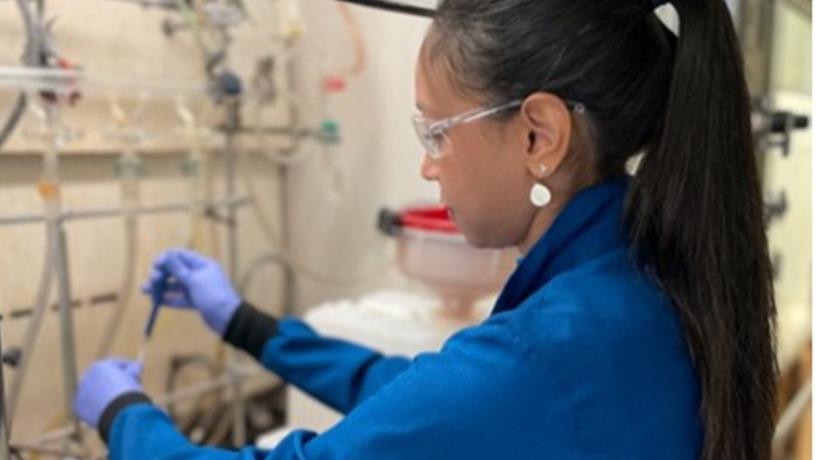
Carliza Canela
Sushma Chappidi | Bioelectronic Systems Lab
FACULTY MENTOR: KEN SHEPARD, DEPARTMENT OF BIOMEDICAL ENGINEERING
Research poster depicting future goals with research done during the duration of the SURE Program.
Sushma Chappidi is a third-year student at Virginia Commonwealth University from Leesburg, Virginia. She is currently majoring in biomedical engineering with a concentration in rehabilitation engineering, a minor in Spanish and a Global Education certificate. Chappidi's research interests include using nanopores in designing a device to diagnose Alzheimer's Disease at home, medical devices, and prosthetic engineering. In the future, Ms. Chappidi hopes to work in industry with additive manufacturing such as 3D printed implants.
See the full-size poster here
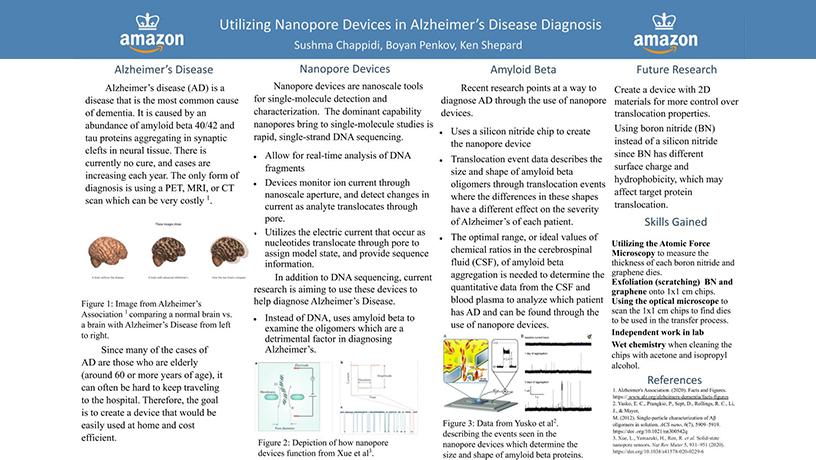
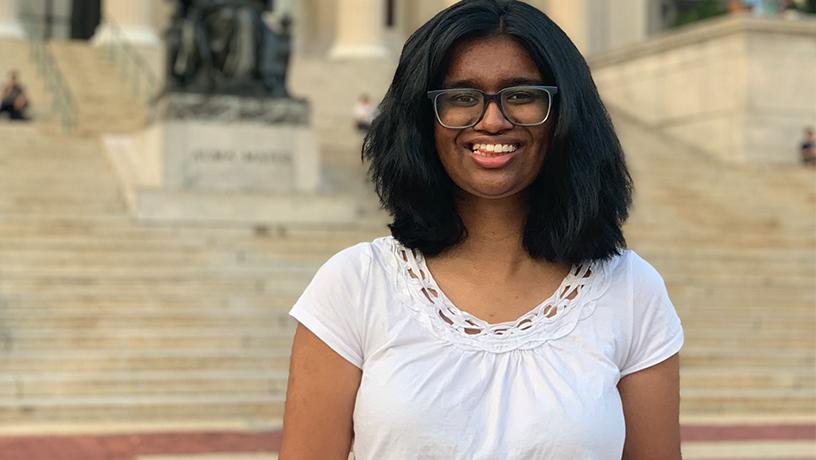
Sushma Chappidi
Andre Deosaran | Structure Function Imaging Lab
FACULTY MENTOR: CHRISTINE HENDON, DEPARTMENT OF ELECTRICAL ENGINEERING
Andre Deosaran is a rising junior at The Grove School of Engineering at The City College of New York pursuing a Bachelor’s of engineering in the biomedical engineering program. He is looking to explore the field of integrating neural systems with prosthetics in order to provide a better quality of life for people in need. Andre loves to travel and try new food and dances Mexican folkloric dance professionally.
Atlas Development from OCT-imaged breast tissue: Analysis of a 100-patient pilot study
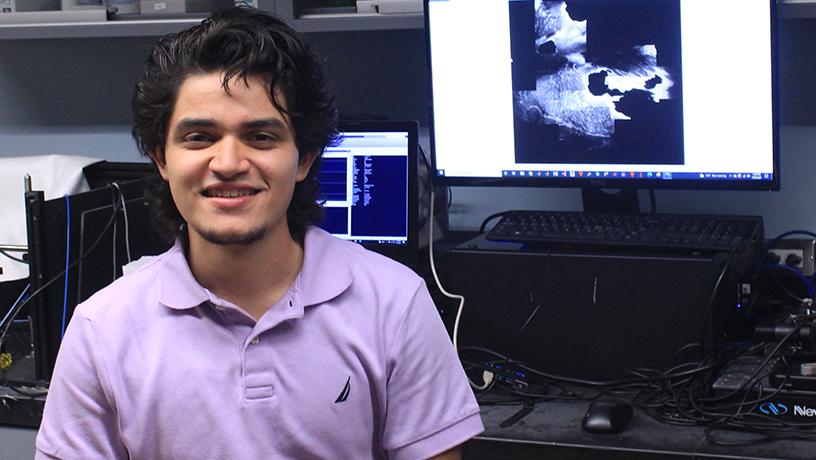
Andre Deosaran
Marcos Fermin | Motor Drives and Power Electronics Lab
FACULTY MENTOR: MATTHIAS PREINDL, DEPARTMENT OF ELECTRICAL ENGINEERING
Imbalance Classification of Li-ion Battery Strings using Pulse-Injection-Aided Machine Learning Lithium-ion battery packs are typically composed of hundreds of cells. For proper func- tioning, a battery management system must monitor each cell. Typically the voltage, current, and temperature are measured to yield information on the battery states, such as state of charge, state of health, and power. Cell states inform the battery manage- ment system how to operate the cells in the pack, thus directly aecting the battery's performance. Of particular interest is the cell "string," a group of series-connected cells. In a string, each cell is charged and discharged at the same current and at the same time (neglecting high-frequency behavior), but the cell voltages and state of charge can have signicant variations. The string voltage is the sum of all the cells' voltages, and the string voltage response is a superposition of all the cells' responses. Therefore, the proposed Imbalance Classication of Li-ion Battery Strings using Pulse-Injection-Aided Machine Learning method obtains information about the cells from the superimposed string voltages while classifying balanced or imbalanced states of charge using a Feedfor- ward Neural Network for N arbitrary amount of string voltage responses with ns number of battery cells per string. See the full text here
Marcos Tulio Fermin Lopez is an undergraduate electrical engineering student from the Dominican Republic at The City College of New York. He enjoys exploring new electrical engineering topics, especially those related to smart electric energy, power systems, machine learning, IoT devices, and robotics. He has always been a curious person, and knowing how everything around him functions has always been fascinating to him. Because of this, he enrolled in a specialized high school in his home country, where he had the opportunity to study the fundamentals of mechatronics, industrial electronics, PLC programming, and electrical circuits. After graduating high school, he moved to the United States, where he enrolled at Borough of Manhattan Community College in New York City, obtaining an associate’s degree science in engineering science. Soon after, he transferred to The City College of New York as a candidate for the bachelor of engineering in electrical engineering, which he is currently pursuing. After graduating from The City College of New York as an electrical engineer in Fall 2021, he will apply to the MS/Ph.D. in electrical engineering program at Columbia University, focusing his research on smart electric energy.
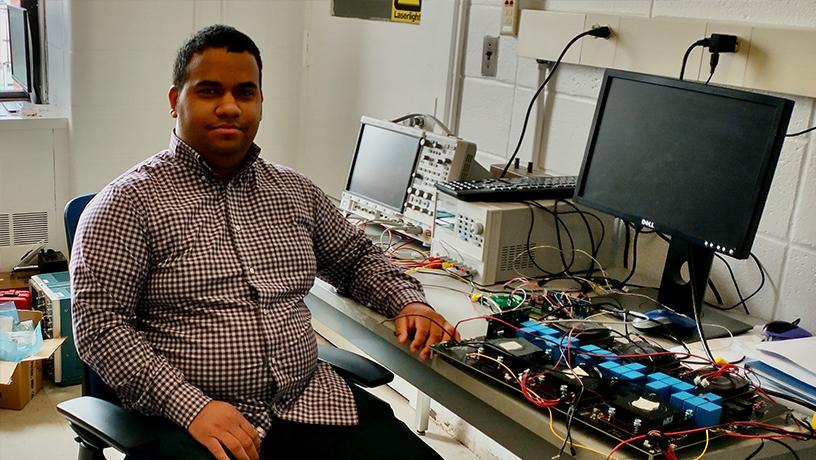
Marcos Fermin
Ellie Haber | Wright Lab
FACULTY MENTOR: JOHN WRIGHT, DEPARTMENT OF ELECTRICAL ENGINEERING
Within the field of computer vision, one of the biggest challenges researchers face is how to design models that can perform invariant feature detection. Current neural networks designed for correctly classifying images are trained on large datasets to recognize different features, however many neural network architectures struggle with the task of object detection in image data with structural variations such as changes in viewpoint and illumination, small rotations, and translations. One solution to this problem is to perform data augmentation, however this scales exponentially with the number of possible transformations of the image domain and is not sustainable for resource-efficient training of neural networks. Our approach to the problem of invariant feature extraction is to frame the process as an optimization problem solved using gradient descent in order to find an image domain transformation that results in a spiky output feature map. In the case of invariant feature extraction for affine transformations such as rotations, we design a feature extractor to detect rotated transformations of a basic motif in an input image. We do this by minimizing an objective function with the expectation that the minimized value will result in a spiky feature map, with large values representing the rotated motifs and smaller values appearing everywhere else in the feature map.
Ellie Haber is a rising senior at the NYU Tandon School of Engineering majoring in computer science with a minor in mathematics. She has conducted machine learning research on AI-augmented medical devices, medical imaging, invariant object detection in computer vision, as well as work with large-scale language models and clustering algorithms with fairness constraints. She hopes to continue doing research in computer vision with applications to the biomedical domain in the future.
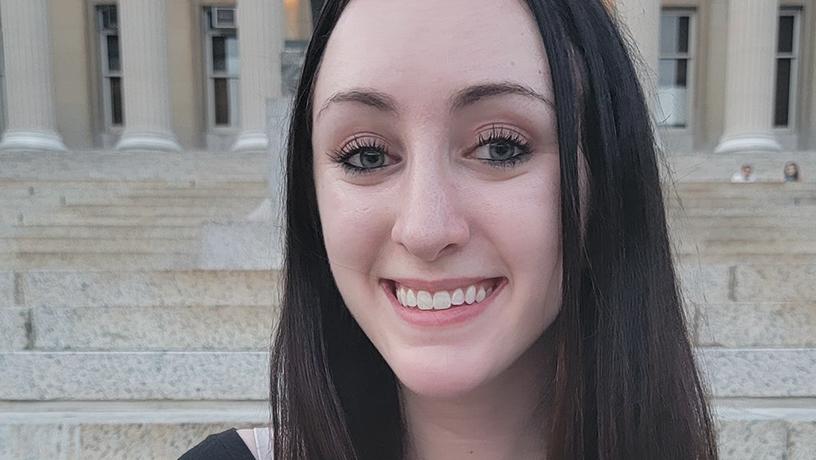
Ellie Haber
Tasfia Haque | Synthetic Biological Systems Lab
FACULTY MENTOR: TAL DANINO, DEPARTMENT OF BIOMEDICAL ENGINEERING
Synthetic sRNA-Mediated Gene Knockdown of Polycistronic mRNA
Small RNA (sRNA)-mediated gene knockdown is a bacterial mechanism of post-transcriptional gene regulation, where sRNA binds mRNA to decrease gene expression. The use of synthetic sRNA has been explored to downregulate individual genes of interest and study their functions. However, there is a gap in knowledge of how synthetic sRNA affects the gene expression of polycistronic mRNA, which carries multiple genes in one mRNA, depending on binding location and motifs. To test sRNA-mediated knockdown of genes encoded in polycistronic mRNA, I designed a reporter plasmid expressing bicistronic mRNA encoding two fluorescent reporter genes to measure gene expression and broccoli aptamer tag to monitor mRNA degradation. I used NUPACK, a software for designing and analyzing nucleic acid systems, to design different synthetic sRNA sequences that would bind different regions of the bicistronic mRNA and fold into their programmed binding motifs. These sequences will be incorporated into sRNA plasmids, which will be co-transformed into bacteria with the reporter plasmid. Once these plasmids are cloned, the fluorescence signals of bacteria will be measured to evaluate how synthetic sRNAs with different binding locations and motifs affect the expression level of genes in polycistronic mRNA and its degradation.
Tasfia Haque was born and raised in the Bronx and is a rising junior at Stony Brook University majoring in Biology. Her research interests are wide-ranging. As part of the SURE Program, she has been researching synthetic sRNA-mediated gene knockdown in polycistronic mRNA. She also conduct research at her home university, where she is currently learning how to process and analyze fMRI scans to study the physiological effects of depression on the human brain. In her spare time, she enjoys reading poetry and visiting different museums.
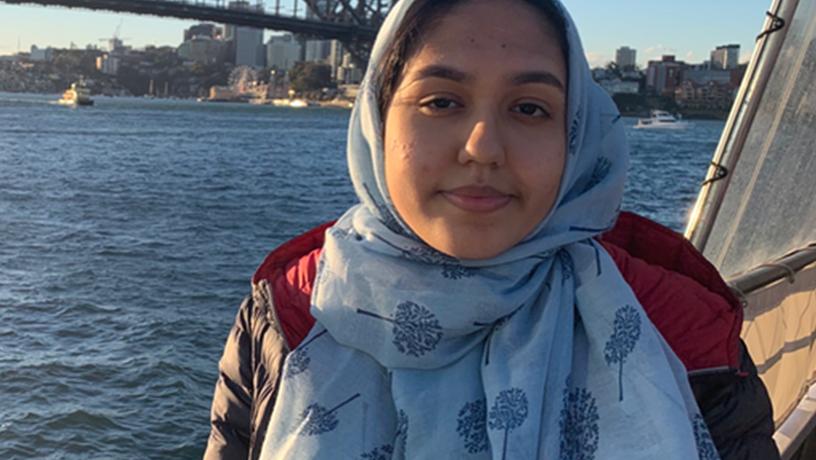
Tasfia Haque
Jada Hinds | Myers Soft Tissue Lab
FACULTY MENTOR: KRISTIN MYERS, DEPARTMENT OF MECHANICAL ENGINEERING
Jada Hinds is a junior (class of 2023) at Duke University majoring in mechanical engineering. She is from Pembroke Pines, Florida. She is interested in mechanical engineering research, marketing, and women's health!
Jada Hinds' research work on the effect of maternal anatomy parameters on the loading of the 2nd trimester cervix
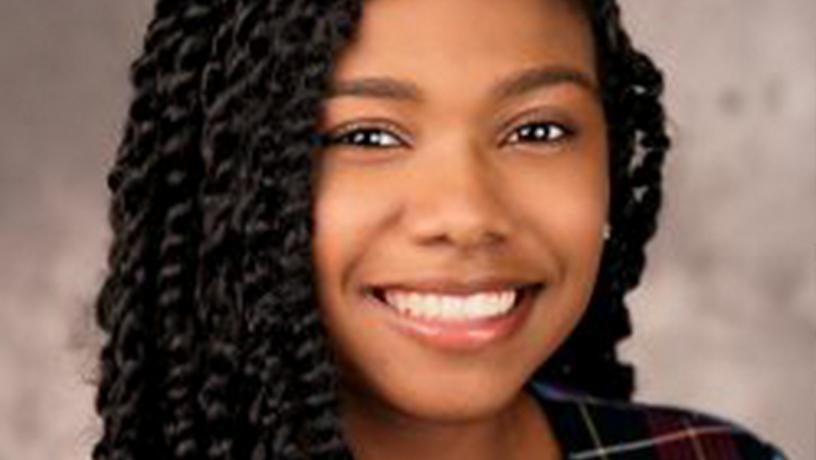
Jada Hinds
Sabbir Hossain | Wimnet lab
FACULTY MENTOR: GIL ZUSSMAN, DEPARTMENT OF ELECTRICAL ENGINEERING
Sabbir Hossain is a student at The City college of New York. He graduated from New World High School with honors. He is interested in working with technology.
He chose electrical engineering as his major because it provides him a broad base of knowledge that can apply in a wide variety of industries. He also believes that knowledge and creativity skills and experience are essential qualities needed to excel in the field of electrical engineering.
SURE fellow Sabbir Hossain presents his experiences doing research in faculty of electrical engineering Gil Zussman's lab
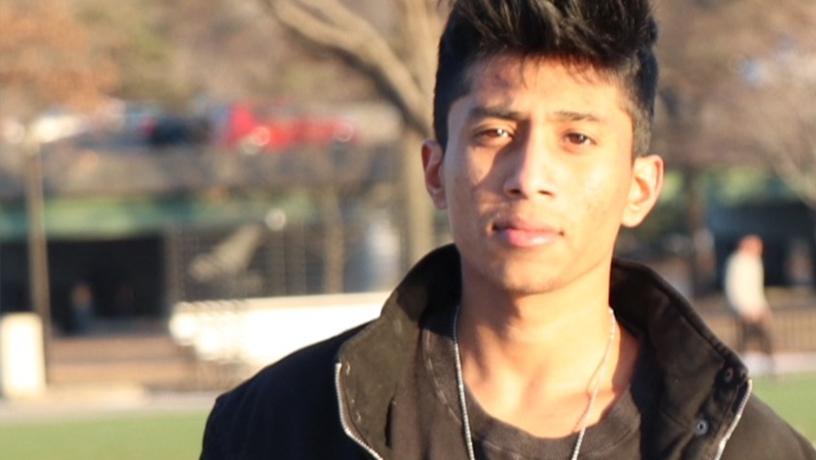
Sabbir Hossain
Rasha Hussain | Venkataraman Lab
FACULTY MENTOR: LATHA VENKATARAMAN, DEPARTMENT OF APPLIED PHYSICS AND APPLIED MATHEMATICS
The Pictet-Spengler reaction was discovered by Amé Pictet and Theodor Spengler in 1911. The reaction involves the condensation of an aryl-ethylamine and a ketone or aldehyde, affording tetrahydroisoquinolone scaffolds as the carbon of the ketone/aldehyde bonds with the least sterically hindered carbon on the six-membered ring of the benzene. Conventionally, a Lewis acid is required to catalyze the reaction, however some reactions are known to condense and form some reactivity without the acid. The aromaticity of the benzene ring allows for resonance to take place, thus providing a certain level of regioselectivity that can then allow for two products to form, depending on substituent electronic and steric environments. We hypothesized that an externally applied electric field can also bias regioselectivity as they affect the stability of regio-divergent transition states owing to their different dipole moments. These factors can impact the placement of substituents on the products that are formed, as well as the amount of product that is formed.
Towards this aim, we have examined the impact that STM-BJ and a conventional Lewis acid, ytterbium, have on the reactivity and regioselectivity of the products formed by the reaction. Complementary control experiments were carried out in environments with no electric field and without ytterbium. Through analysis of product mixtures via LC-MS, it was found that STM provided a higher intensity for product peaks than when using no electric field, signifying that the STM had indeed aided in stabilizing the products and increasing the reactivity. Purification via silica flash column chromatography was conducted in order to attain an accurate result of product yield, however it was found through NMR that the products began to decompose. Alternative purification methods are currently being investigated in order to gain an accurate comparison between the products formed in an STM environment and in a conventional Lewis acid catalyzed reaction.
Rasha Hussain is a rising senior in City College of New York. She is currently majoring in biomedical engineering with a pre-med concentration and minors in psychology and hopefully in mathematics. She has research experience in psychology and neurology, however, due to the pandemic, she never got the chance to have real lab work. This experience provided her with that. She used to live in New York, but moved to New Jersey during the pandemic, and so, she is a bit scared as to how the commute will work next semester when classes are in-person. The SURE program has provided her with the ability to participate in a social setting, which she is eternally grateful for. Thank you!
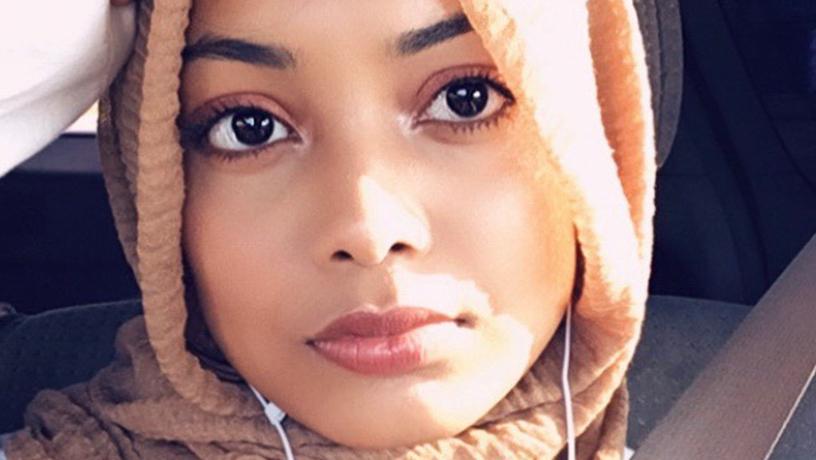
Rasha Hussain
Zafrul Islam | Quadracci Sustainable Engineering Lab
FACULTY MENTOR: VIJAY MODI, DEPARTMENT OF MECHANICAL ENGINEERING
The purpose of this project is to build a cost-effective, simple computer vision unit that can locate irrigated plots of land as precisely as possible. The unit was tested on objects at various distances ranging between 5m-100m. It would then be mounted onto a vehicle and record the depth of objects while the vehicle is in motion. The goal of this project is to use the system in parts of sub-Saharan Africa to detect and geolocate irrigated plots of land during the dry season and use that collected data to train machine learning models for evaluating further irrigated plots on satellite imagery. See the full text here
Zafrul is currently enrolled as a third-year student at The City College of New York and is majoring in electrical engineering. He plans to graduate from The City College of New York with a bachelor of engineering in 2023 and obtain his master of science in computer science at Columbia University. His research interests include machine learning and computer vision.
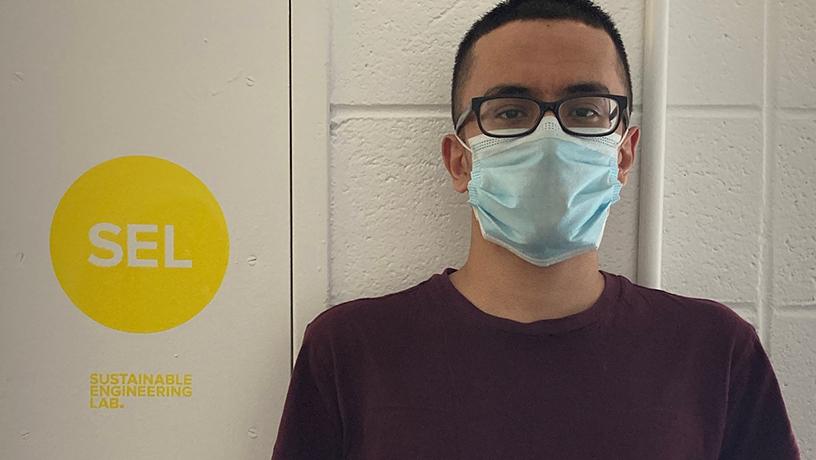
Zafrul Islam
Malka Jacobs | Robotics and Rehabilitation Lab
FACULTY MENTOR: SUNIL AGRAWAL, DEPARTMENT OF MECHANICAL ENGINEERING
This summer I had the wonderful opportunity to work in the Robotics and Rehabilitation (RoAR) Lab, led by Dr. Sunil Agrawal, under the direct mentorship of PhD candidate Danielle Stramel. During my time in the lab, I focused on improving a robotic system known as the mobile Tethered Pelvic Assist Device, nicknamed the mTPAD. See the full text here
Malka Jacobs is a rising senior studying biomedical engineering at the City College of New York. She plans on getting a master’s degree in mechanical engineering and hopes to design biomedical devices with robotic components in her near future. When not studying, Malka can be found reading or blogging about books.
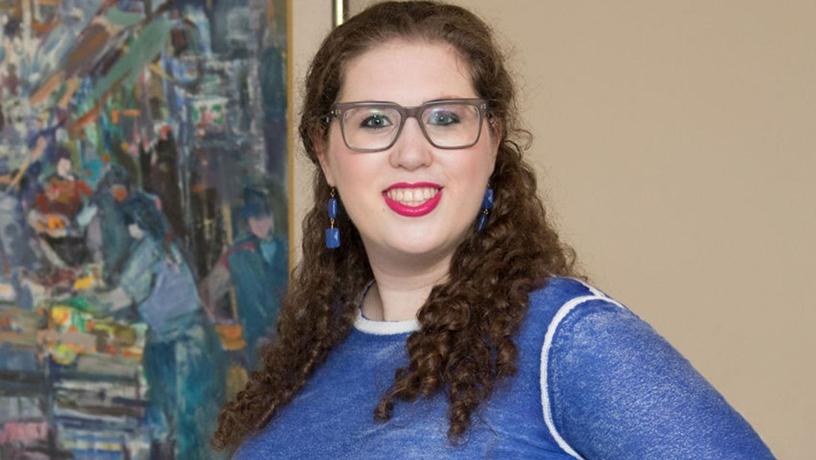
Malka Jacobs
Sin Lin | Columbia Water Center
FACULTY MENTOR: UPMANU LALL, DEPARTMENT OF EARTH AND ENVIRONMENTAL ENGINEERING
Sin Lin is a third-year student at the School of Engineering and Applied Sciences at the University of Virginia. She is from Brooklyn, New York. She is majoring in civil engineering on the environmental track and plans to graduate in the year 2023. She has been involved in research since her first year at UVA, starting with chemical engineering research focused on desalination membranes in her first year, followed by research in broadband infrastructure, focused on bridging the digital divide in New York and in Virginia. She wanted to pinpoint a research topic that fell more closely in line with her sustainability interests. This summer, through the SURE program at Columbia University, she got the opportunity to work with Dr. Upmanu Lall and Dr. Sara Schwetschenau as a researcher at the Columbia Water Center. She investigated wastewater treatment alternatives to replace failing septic systems in rural Alabama through preliminary technology review and interviews!
Can available technology at different treatment scales reliably and effectively provide the wastewater treatment and reuse services that are historically provided by centralized and septic systems?
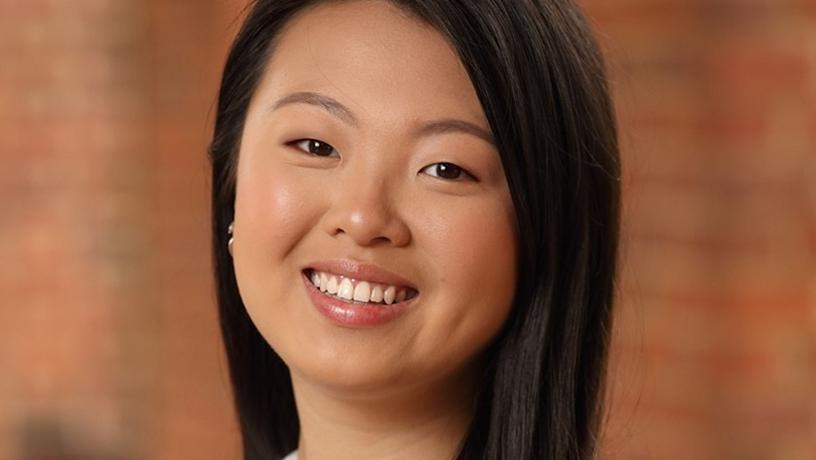
Sin Lin
Robert Magpie | Kumar Lab
FACULTY MENTOR: SANAT KUMAR, DEPARTMENT OF CHEMICAL ENGINEERING
Robert Magpie is a rising Junior at Montana State University, studying chemical engineering. He developed a passion for STEM early on in his undergraduate career and pursued his career ambitions in chemical engineering through internships with NASA and computational chemistry research. He grew up on the Northern Cheyenne Reservation in Montana. While he is not in the lab or the library, you’ll find him competing at different rodeos.
SURE fellow Robert Magpie presents on the work he did in faculty of chemical engineering Sanat Kumar's lab
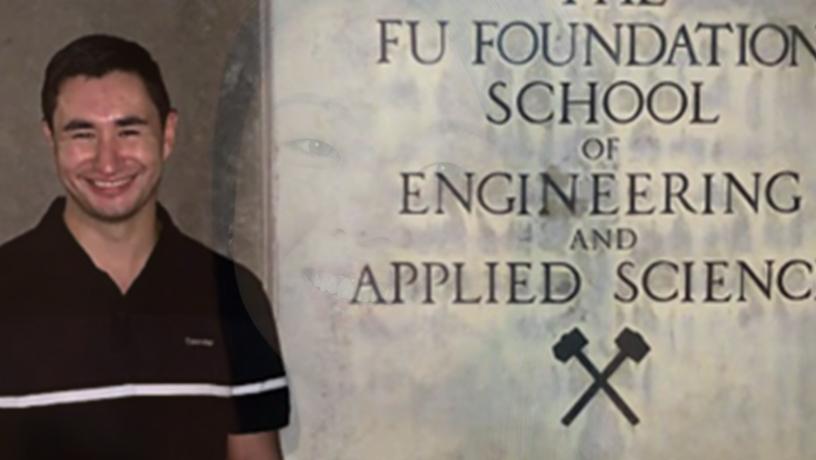
Robert Magpie
Chelsea Mikal | O’Shaughnessy Research Group
FACULTY MENTOR: BEN O’SHAUGHNESSY, DEPARTMENT OF CHEMICAL ENGINEERING
Chelsea Mikal is a junior chemical engineering student at the University of Maryland Baltimore County (UMBC). Her research interests are in biological and environmental engineering and science.
This video discusses how the fusion intermediate helps SARS-CoV-2 capture the host cell and how the SARS-CoV-2 virus infects people to cause disease
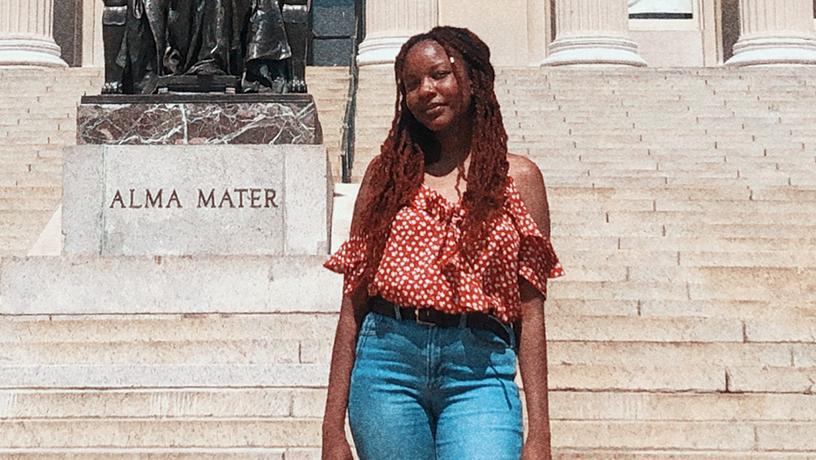
Chelsea Mikal
Eries Jay Moreno | Structure Function Imaging Lab
FACULTY MENTOR: CHRISTINE HENDON, DEPARTMENT OF ELECTRICAL ENGINEERING
Eries Jay Moreno is a senior at the University of Guam double majoring in psychology and biomedical science. His research interests involve cancer and cardiovascular health, two prevalent illnesses in the island of Guam. In the near future, he hopes to continue pursuing research and medicine and return to Guam as a physician-scientist. During his free time, Eries Jay enjoys making coffee and going to the beach.
Atlas development from OCT-imaged breast tissue: analysis of a 100-patient pilot study
This research presentation is developed by Eries Jay Moreno & Andre Deosaran under the guidance of Dr. Diana Mojahed and Dr. Christine Hendon of the Structure Function.
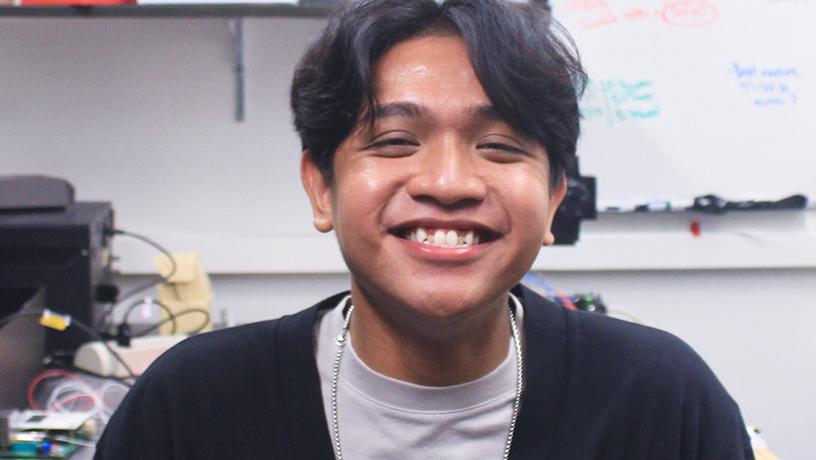
Eries Jay Moreno
Onyinyechi Obineche | Environmental Flow Physics Lab
FACULTY MENTOR: MARCO GIOMETTO, DEPARTMENT OF CIVIL ENGINEERING AND ENGINEERING MECHANICS
Onyinyechi Winner Obineche is a mechanical engineering undergraduate student (junior) from the City College of the City University of New York. His research interests are heat transfer related. His is originally from Nigeria but is based in the Bronx.
Quantifying the impact of urban trees on surface temperatures in urban cities
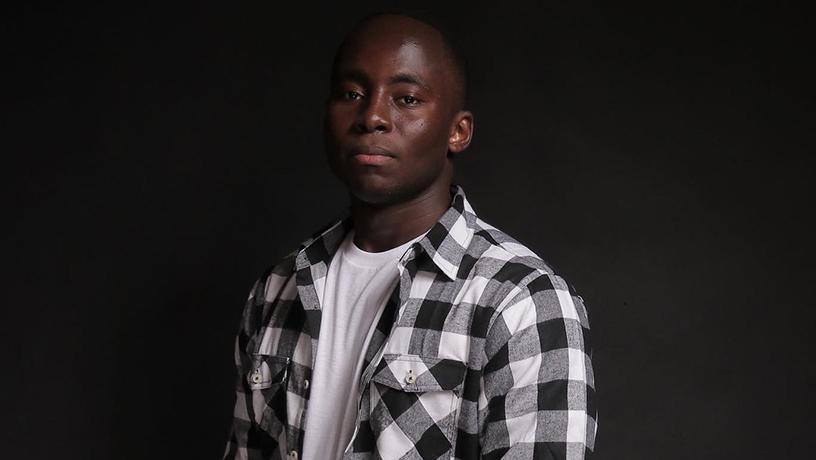
Onyinyechi Obineche
Imani Phillips | Simunovic Lab
FACULTY MENTOR: MIJO SIMUNOVIC, DEPARTMENT OF CHEMICAL ENGINEERING
Imani Phillips is a rising Junior at Tuskegee University in the College of Engineering, pursuing a bachelors of science degree in chemical engineering and a minor in materials science and engineering. She is a member of the Tuskegee University University-Wide Honors program, an honor roll student for the 2019-2020 academic year, and an INROADS scholar. Imani is interested in pursuing a career in the pharmaceutical industry or research to help find cures for diseases.
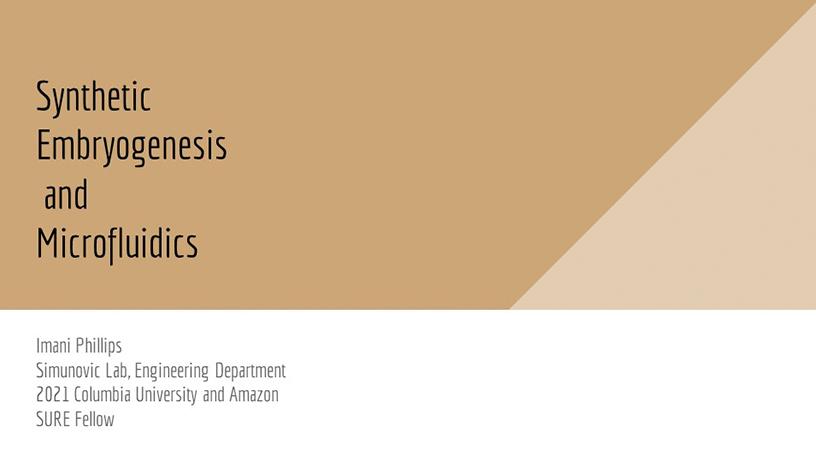
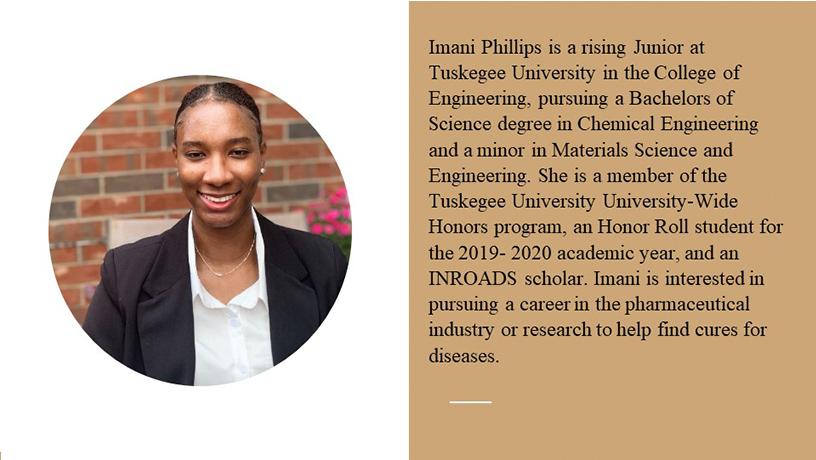
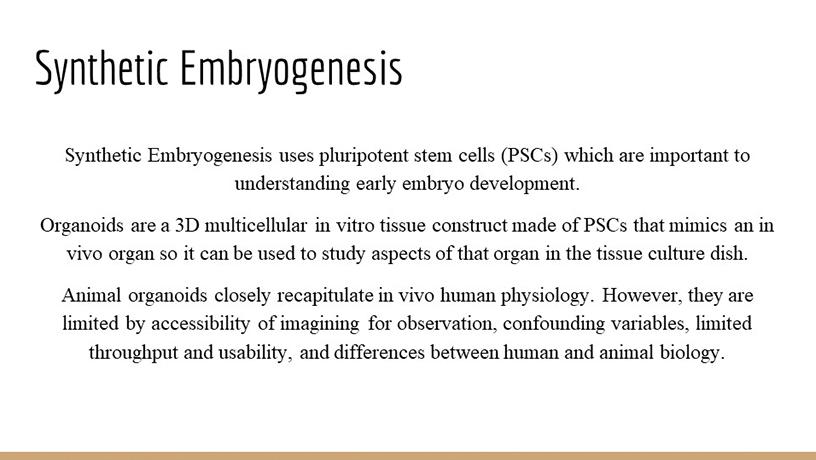
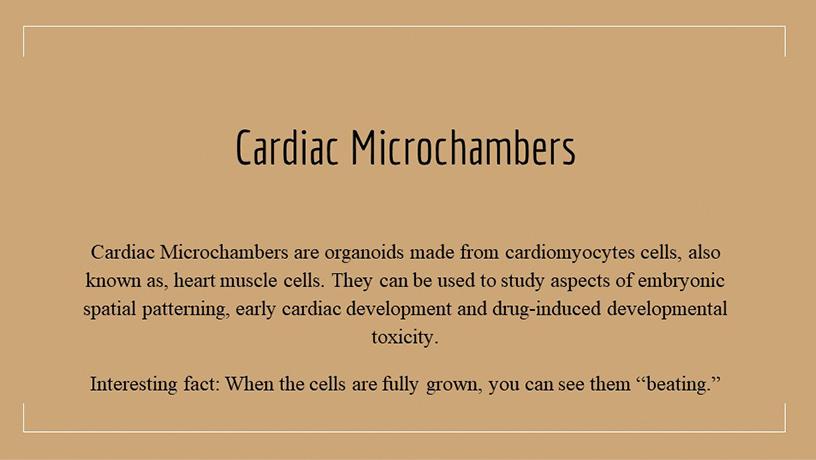
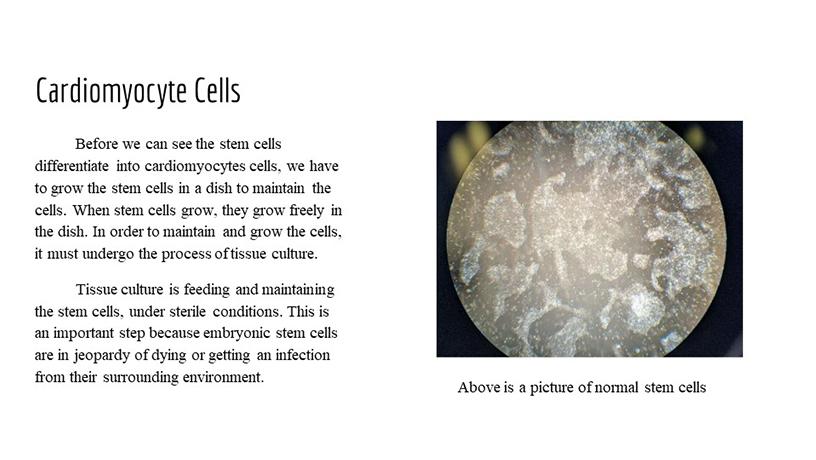
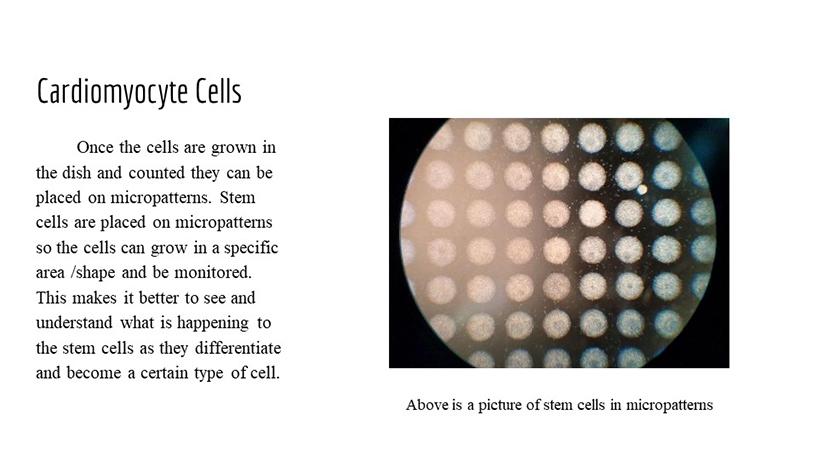
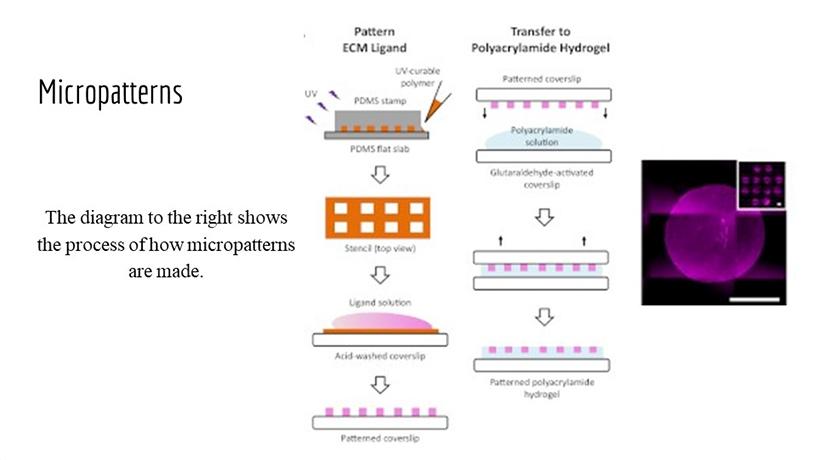
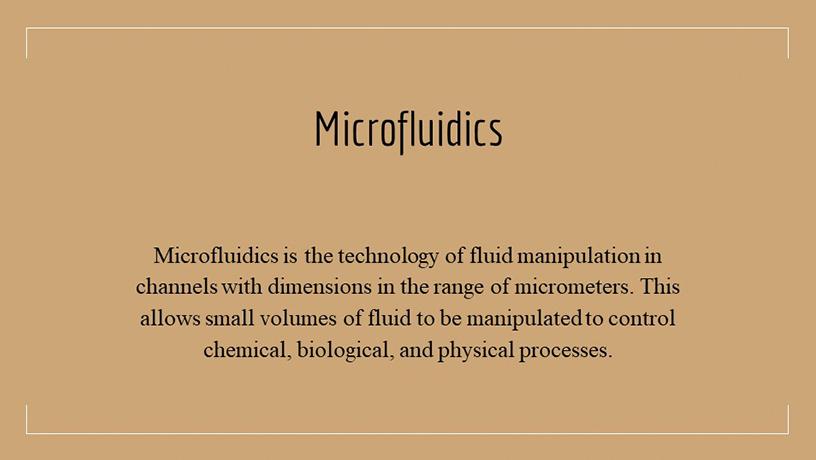
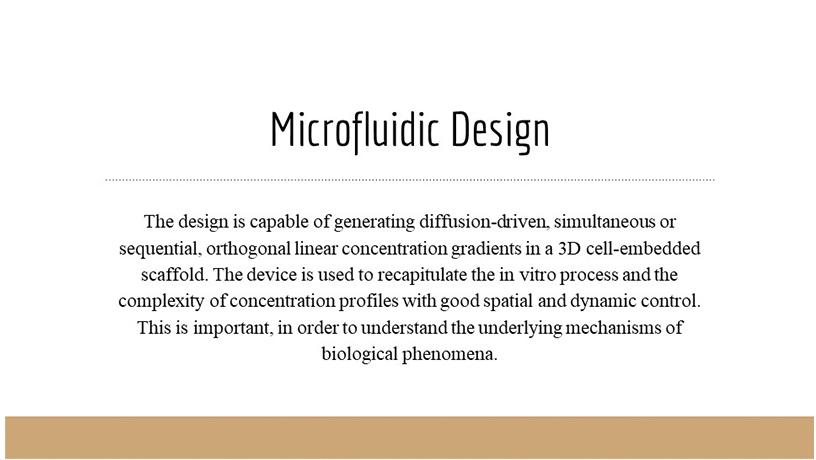
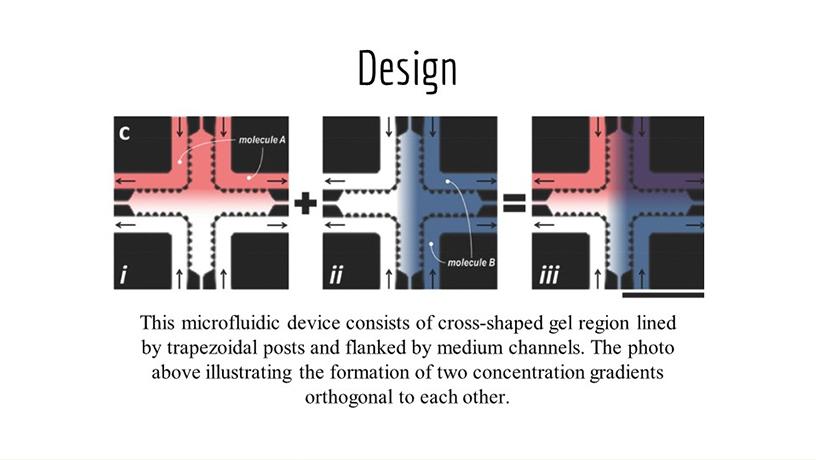
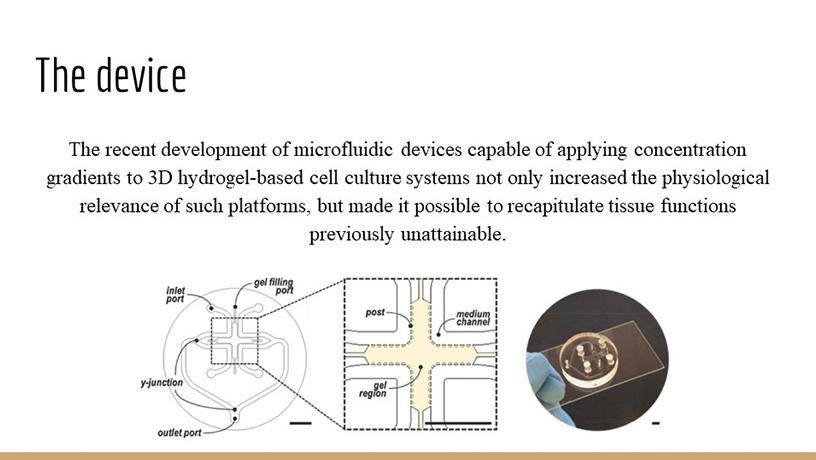
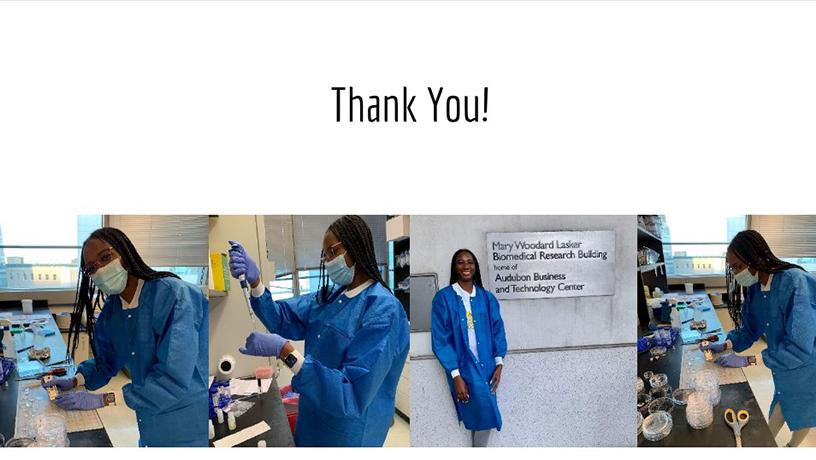
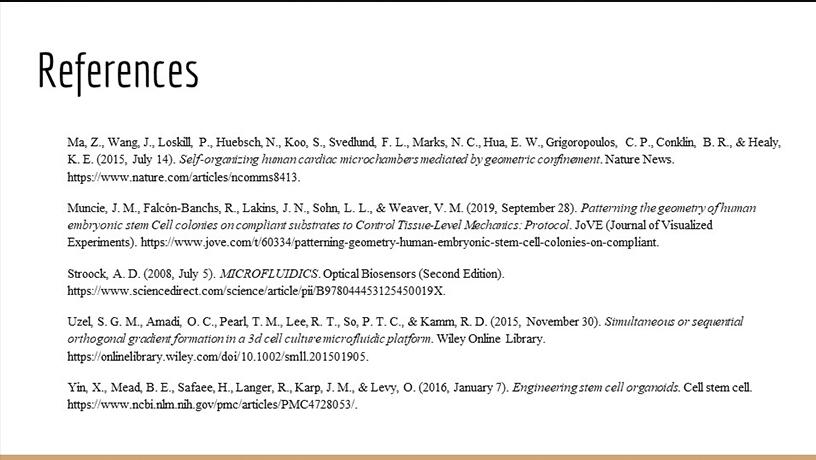
Alondra Stafford | Simunovic Lab
FACULTY MENTOR: MIJO SIMUNOVIC, DEPARTMENT OF CHEMICAL ENGINEERING
Alondra Stafford is from Dallas, Texas. She is currently a Junior at Spelman College where she studies chemistry and biomedical engineering. She is interested in pursuing a career in pharmaceutical research. After completing her undergraduate degree, she will continue on to get her Ph.D. and would like to work in a hospital or lab setting to make advancements in medicine through prosthetic design.
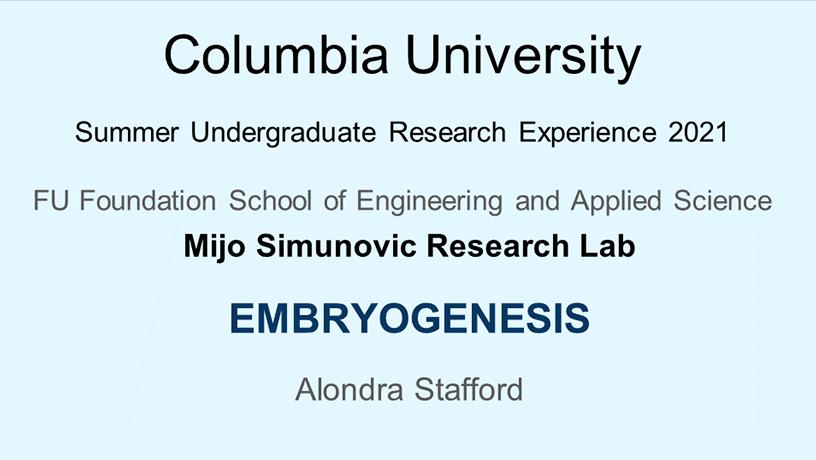
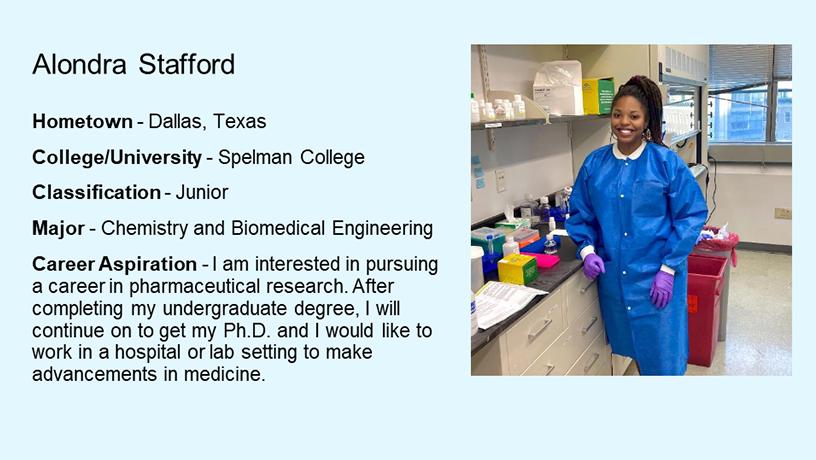
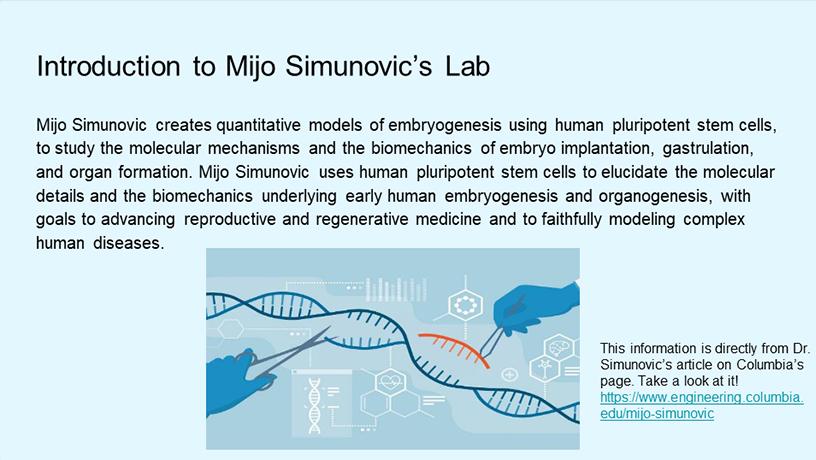
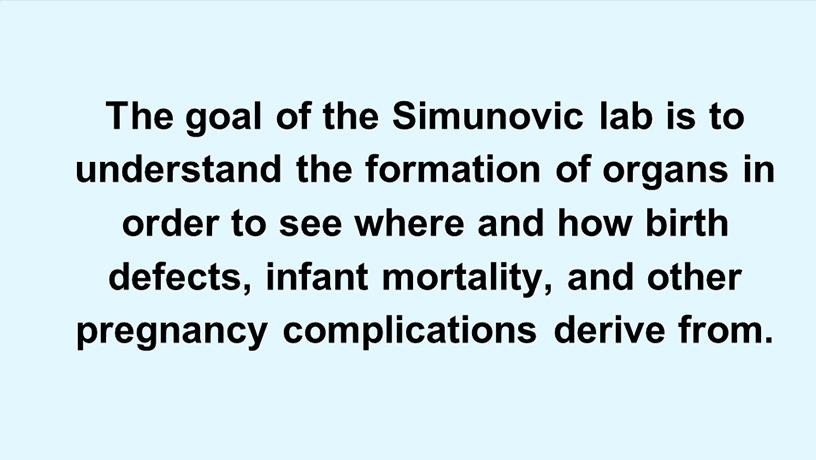
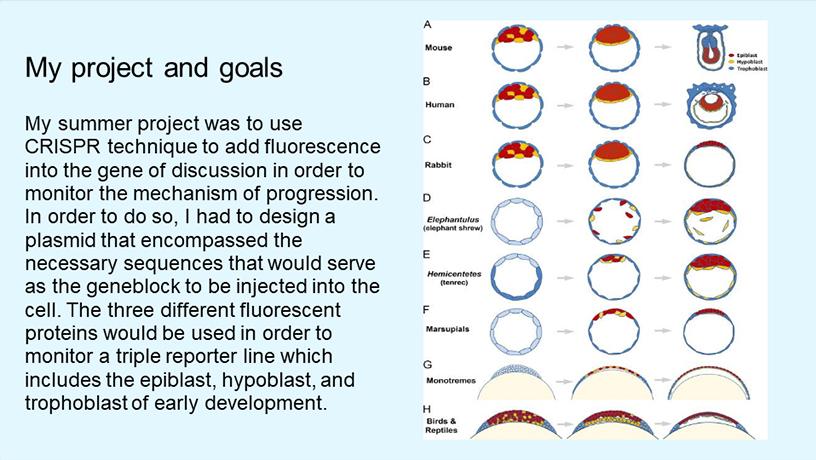
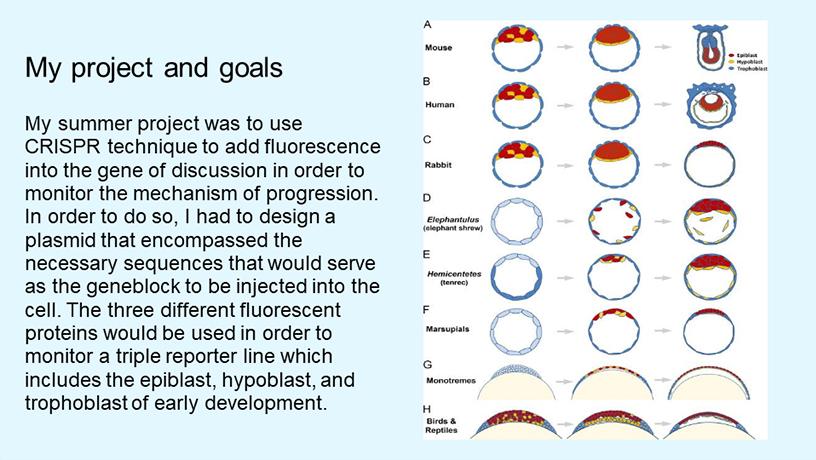
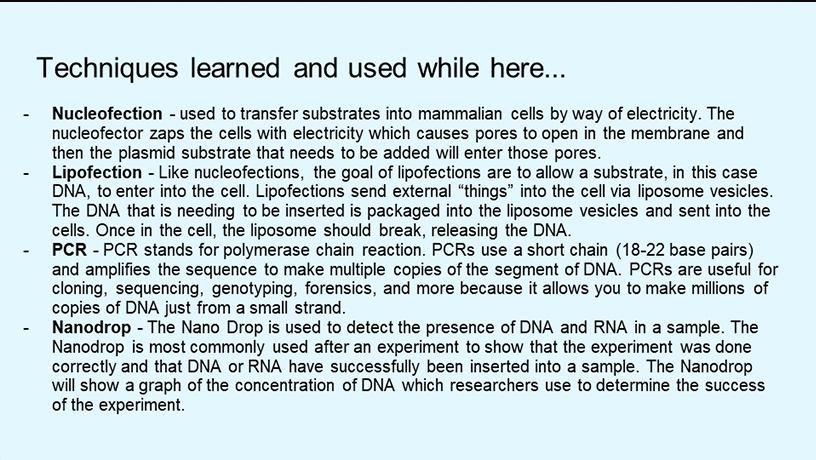
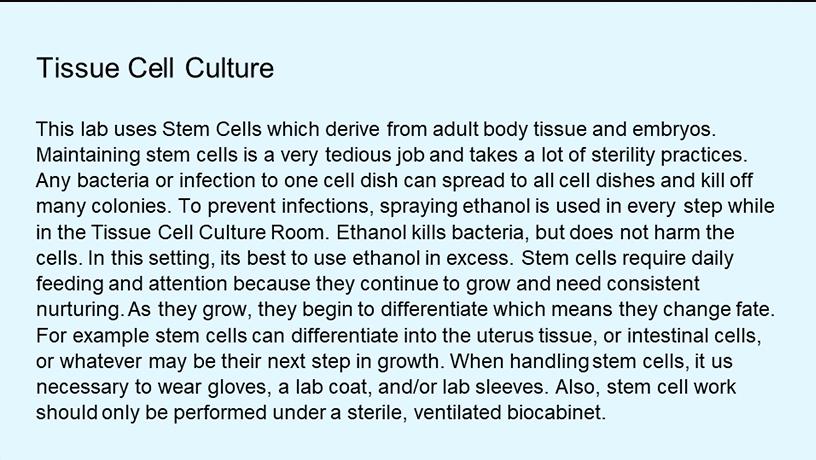
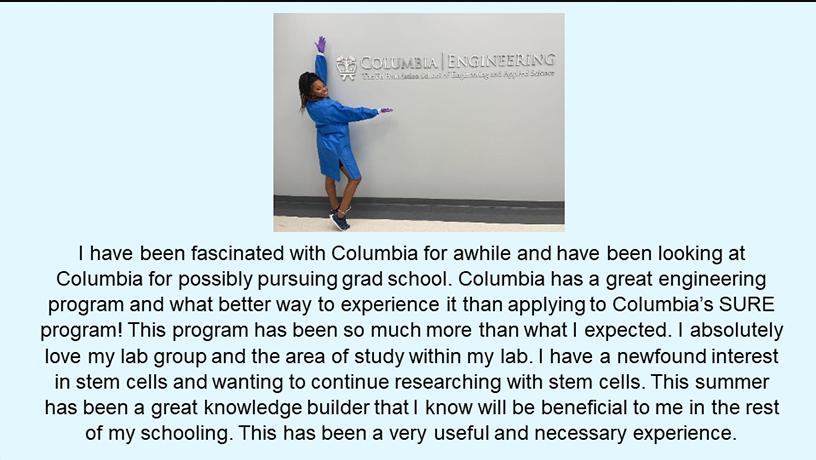
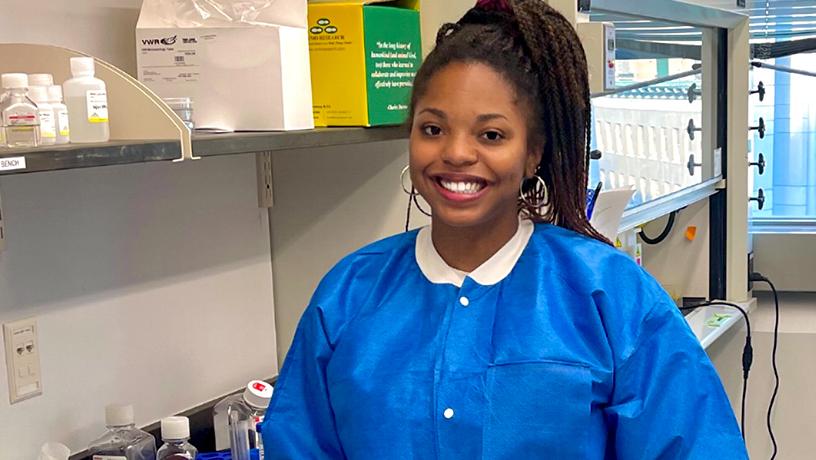
Alondra Stafford
Stacy Villanueva | Kumar Lab
FACULTY MENTOR: SANAT KUMAR, DEPARTMENT OF CHEMICAL ENGINEERING
Stacy Villanueva is a third-year undergraduate student at the University of Maryland, Baltimore County. She plans to graduate in Spring 2023 as a chemical engineering major on the environmental track with a minor in Chinese language and culture. She has been interested in research involving renewable energy or sustainability, but after working with polymer nanocomposites this summer, she has gained an interest in that field of research as well.
In this video, SURE fellow Stacy Villanueva talks about her project where she observed the effect of surface modification and particle loading on the mechanical properties of elastomer nanocomposite.
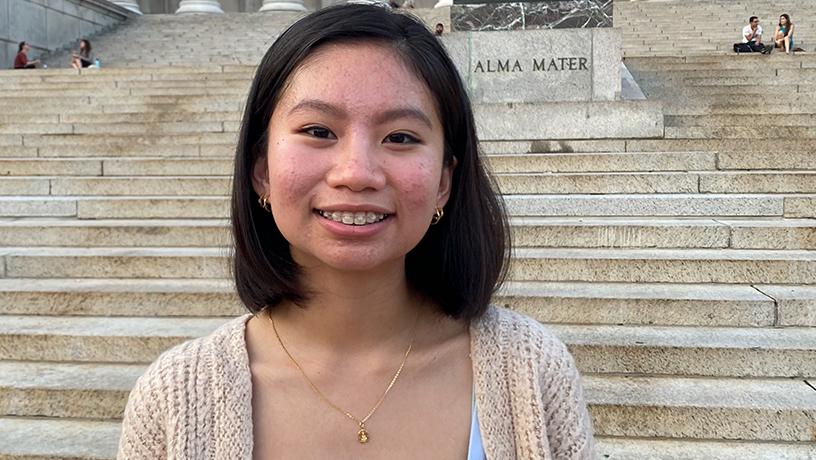
Stacy Villanueva
Cameron Ashe | Zuckerman Institute
FACULTY MENTOR: THOMAS VAUGHAN, DEPARTMENT OF BIOMEDICAL ENGINEERING
Cameron Ashe is a senior electrical engineering student from Columbus, Georgia attending Tuskegee University in Tuskegee, Alabama. He had the opportunity this summer to research under the biomedical engineering department and mentorship of Dr. Vaughan to work on a graphical user interface that incorporates a deep learning module developed within the department called ArtifactID, which identifies and classifies MR artifacts found in medical images. This project is helping radiologist in Nigeria with viewing MR scans, image interpretation, and diagnostic quality. Upon graduating in Spring 2022, he plans to apply for graduate school at Columbia University.
SURE fellows Cameron Ashe and Sarah Flanigan present on their research done at the Zuckerman Institute under faculty of biomedical engineering Thomas Vaughan
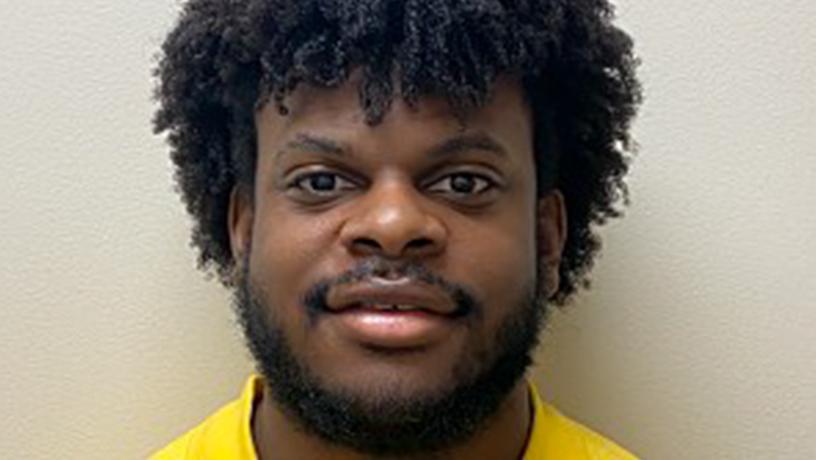
Cameron Ashe
Sarah Flanigan | Zuckerman Institute
FACULTY MENTOR: THOMAS VAUGHAN, DEPARTMENT OF BIOMEDICAL ENGINEERING
Sarah Flanigan is a rising Junior at St. John's University, and her major is Biology. She will graduate in 2023. Her research interests are focused mainly in biomedical engineering, such as skin graft research, MRI analysis, tissue engineering techniques, and cancer metastasis research.
SURE fellows Cameron Ashe and Sarah Flanigan present on their research done at the Zuckerman Institute under faculty of biomedical engineering Thomas Vaughan
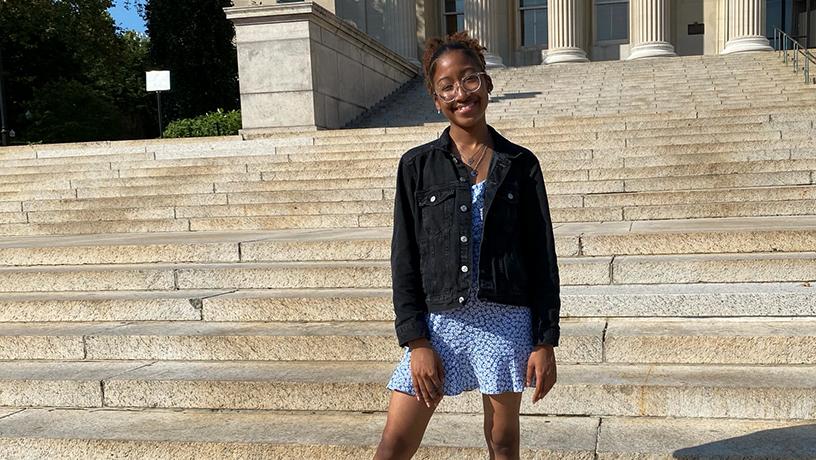
Sarah Flanigan
James Platt | Biomaterials and Interface Tissue Engineering Lab
FACULTY MENTOR: HELEN LU, DEPARTMENT OF BIOMEDICAL ENGINEERING
James Platt is a rising sophomore at Morehouse College in Atlanta, GA from Powder Springs, GA where he majors in biology. His research interests include helping to solve health and injury challenges and developing and applying new techniques and treatments for diseases. The biomedical engineering field as a whole presents him with a world of possibilities when it comes to research.
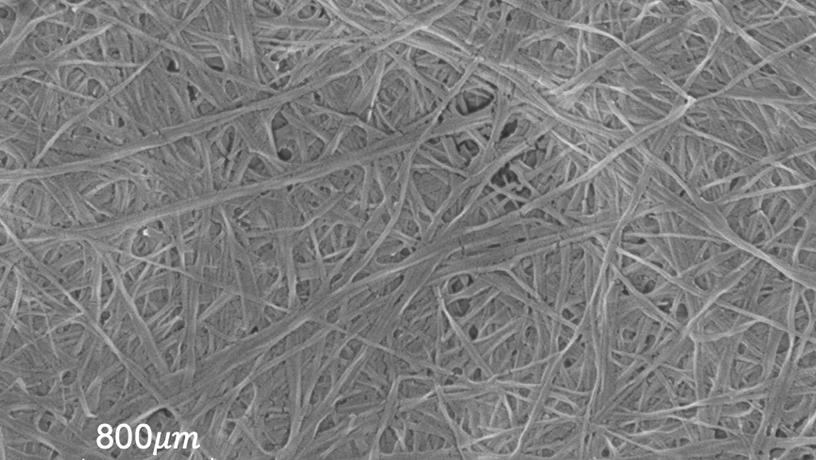
Non-stretched sample of bacterial cellulose nanofibers at 800X magnification
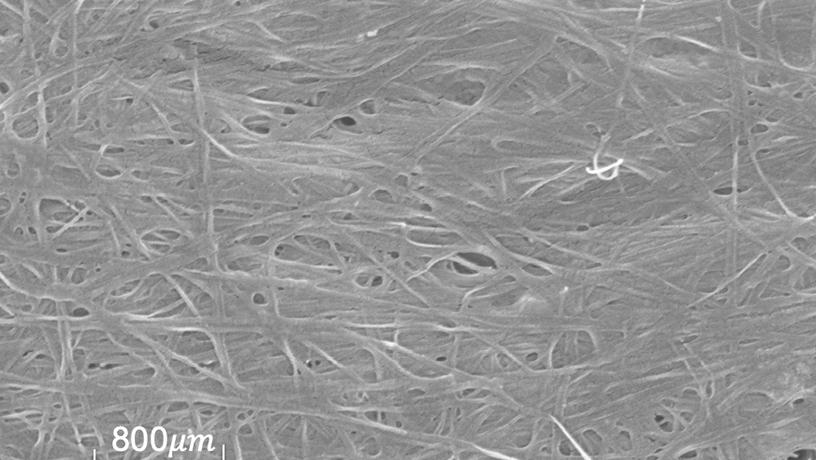
10% stretched sample of bacterial cellulose nanofibers at 800X magnification, showing a degree of fiber alignment
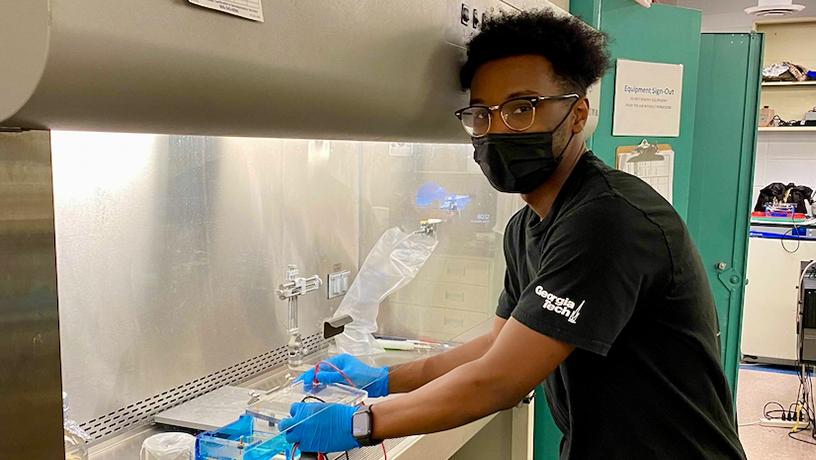
James Platt
Diego Rosario | The Columbia Laboratory for Unconventional Electronics (CLUE)
FACULTY MENTOR: IOANNIS KYMISSIS, DEPARTMENT OF ELECTRICAL ENGINEERING
Diego Rosario is a senior at the University of Puerto Rico – Mayagüez campus where he majors in electrical engineering. He expects to graduate in May 2023. Some of his research interests are in robotics, Internet of Things, and cyber-physical systems. He also enjoys the software world and is considering doing graduate school. In his spare time, he likes to play and watch sports, especially soccer.
Data Collection for IoT Devices Using AWS
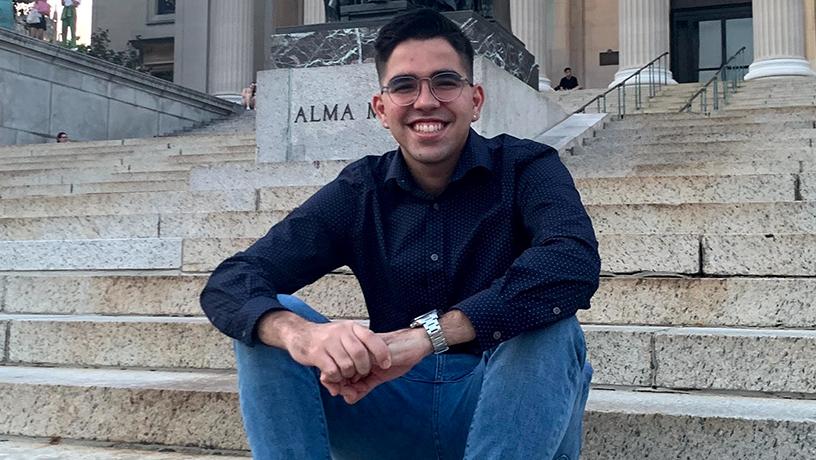
Diego Rosario
Mansi Peesapati | Nanotherapeutics and Stem Cell Engineering Lab
FACULTY MENTOR: KAM LEONG, DEPARTMENT OF BIOMEDICAL ENGINEERING
Columbia SURE has been one of the most enriching experiences in my undergraduate degree. I appreciated the scrupulous attention to detail regarding matching us with our labs and mentors. The goals I came in with for this summer were not only met, but exceeded. In Dr. Kam Leong’s Nanotherapeutics and Stem Cell Engineering Lab, I was afforded a fast-paced experience in the BME niche I am most interested in – cell and tissue engineering. Within four weeks, I was fully immersed in working with nanoparticles, cancer cells, and engineered cell lines. My experience here allowed me to simultaneously build on existing skill sets while applying them in new ways. I have also been taught tangential skills (HPLC, flow cytometry, etc.) to further experience different aspects of BME. Although I have worked in cell and tissue engineering before, this was my initial experience studying immunology and nanotechnology on a deeper level. I look forward to seeing how this newfound interest evolves and thank all those who helped me grow as an engineer this summer! See the full text here
